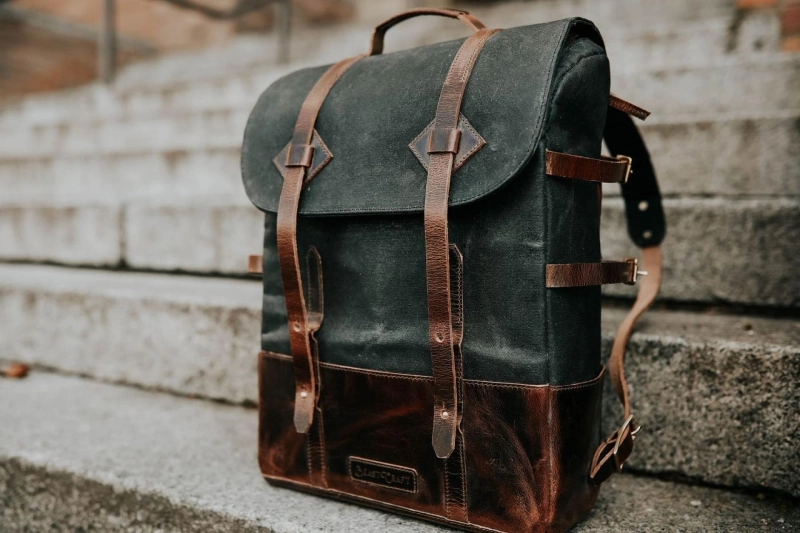Finding the perfect leather bag is like winning the leather lottery – a combination of style, durability, and a touch of luxury. But with a variety of leather types available, picking the right one can feel overwhelming. Fear not, discerning shopper! This guide unveils the strengths and weaknesses of different leathers, empowering you to choose the ideal material for your next prized possession.
The Top Contenders: Unveiling Leather\'s Hierarchy
- Full-Grain Leather: The Unmatched Champion
The A-lister: Full-grain leather reigns supreme. It\'s crafted from the topmost layer of the animal hide, retaining its natural grain and imperfections. This translates into a beautiful, slightly textured surface that develops a rich patina over time, like a fingerprint unique to your bag. Full-grain leather is renowned for its unmatched durability, making it ideal for everyday bags that will endure years of use.
Pros: Incredibly strong and long-lasting, develops a beautiful patina, naturally breathable.
Cons: May have slight natural markings, slightly pricier than other leather types.
Sales For Backpack.
https://uniqueleatherbags.us/leather-backpacks/
- Top-Grain Leather: A Strong Silver Medallist
- The Reliable Runner-Up: Top-grain leather comes from the top layer of the hide as well, but with a buffed surface to create a more uniform look. It offers a smooth, polished finish that\'s still quite durable and develops a subtle patina with age. Top-grain leather strikes a good balance between quality and affordability, making it a popular choice for many bags.
Pros: Very durable, smooth and sleek aesthetic, good value for money.
Cons: Less breathable than full-grain leather, patina may be less noticeable.
- Corrected-Grain Leather: The All-Rounder
The Value Player: Corrected-grain leather is similar to top-grain leather, but with a more extensive surface treatment. A layer of coating or embossing is applied to disguise imperfections and achieve a desired uniformity. While still reasonably durable, corrected-grain leather may not breathe as well and won\'t develop a patina as noticeably as its top-grain counterpart.
Pros: Affordable option, offers consistent appearance, moderately durable.
Cons: Less breathable, may not age as gracefully, might have a more artificial feel.
- Split-Grain Leather: The Budget-Conscious Choice
The Lightweight Contender: Split-grain leather comes from the lower layers of the hide after the top grain has been removed. It\'s often coated or dyed to create a desired appearance. While split-grain leather can be a budget-friendly option for bags, it\'s generally less durable and won\'t develop a patina.
Pros: Most affordable leather type, available in a wide range of colors and patterns.
Cons: Least durable type of leather, may not breathe well, won\'t develop a patina.
Choosing Your Leather Champion: It\'s All About Needs
Durability Matters: If you prioritize a bag built to last, full-grain or top-grain leather is the way to go.
Aesthetics in Play: For a smooth, polished look, top-grain leather is a great choice. Full-grain leather offers a more natural, textured aesthetic.
Budgeting for Beauty: Split-grain leather is the most affordable, but consider the trade-off in terms of longevity. Top-grain leather offers a good balance between price and quality.
Lifestyle Considerations: For everyday bags that will face constant wear and tear, full-grain or top-grain leather is ideal. For a less frequently used statement piece, you might explore corrected-grain leather.
Beyond the Grain: Additional Considerations
Animal Source: Cowhide leather is the most common type used in bags, but other animal hides like buffalo, goat, or lamb can also be used. Each offers unique characteristics in terms of texture, weight, and drape.
Tanning Process: Vegetable-tanned leather is a more eco-friendly option, but it can have a slightly rougher texture compared to chrome-tanned leather.
By understanding the different leather types and their properties, you can make an informed decision that crowns you the champion of choosing the perfect leather bag. Remember, the ideal leather depends on your individual needs and preferences. So, explore the options, appreciate the craftsmanship, and find the winning hide to carry you on your adventures in style!


